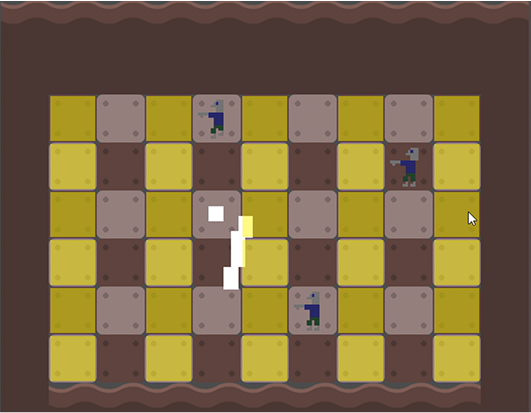


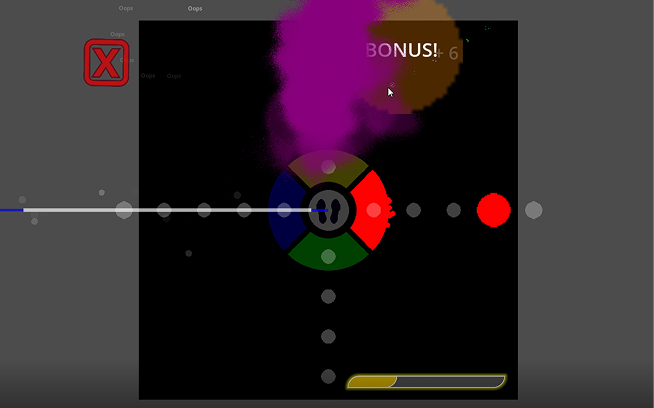
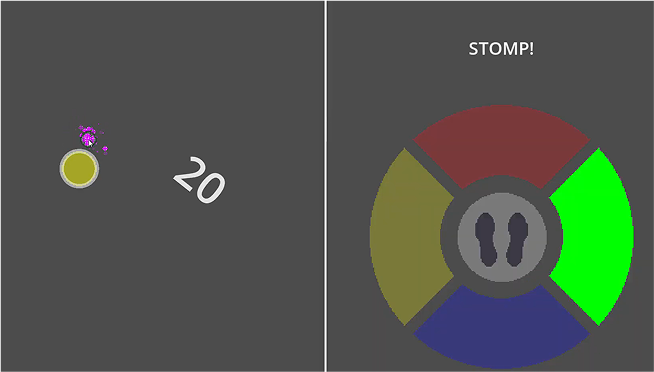
This version of Rhythmscape looks a bit more like what we know it as now. This has two players - one player with a stomp board, and another with control over the mouse - working together to hit notes on beat. Both players have their own “screen” to pay attention to, and each note requires both players stomping to be hit successfully. Notes come in every four beats of a song, and players must maneuver the mouse to the right location and hit the right color of button.
This iteration of Rhythmscape built upon the strongest elements of version 0.1, refining them into a more cohesive experience by placing both players on the same screen. This change enhanced visual clarity and encouraged greater collaboration between players. It also fundamentally redefined the gameplay dynamics: the player using the mouse now assumes the role of the "protector," enabling the stomping player to engage effectively by revealing buttons, facilitating note hits, and supporting overall playability. This version is very close to the final design and represents a significant improvement over all previous iterations.
The inspiration for Rhythmscape came from other awesome rhythm games like Hi-Fi Rush, Dance Dance Revolution, Crypt of the Necrodancer, and many more. Rhythmscape began as a top-down dungeon crawler with enemies and movement based on a square grid. The player would dodge attacks, swing at enemies, collect coins, and much more all on the beat. This idea evolved into a two player game, where one player would control the attacks and the other would control movement. This gameplay loop didn’t serve the “rhythm game” concept super well, though, and most of the ideas were scrapped.
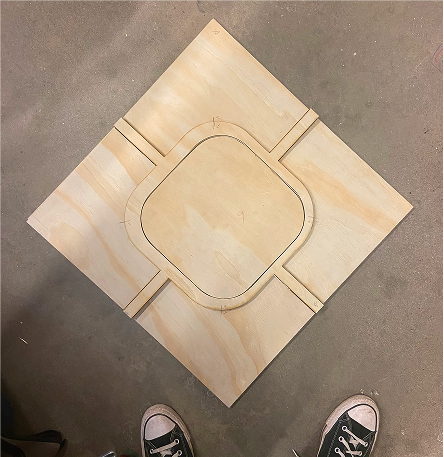

The first version of the dance pad pales in comparison with what it eventually became. Starting small, we focused on quick iterations to find out what was working and what wasn’t. We had plenty of play-testing even at this point, playing a video of our early versions of the game while people stomped around on buttons that didn’t really do anything. This information was vital in refining the final design.

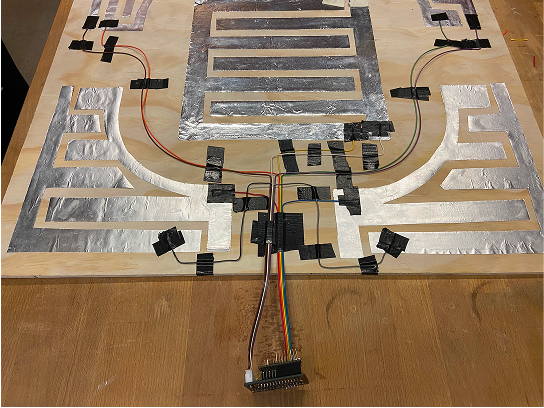
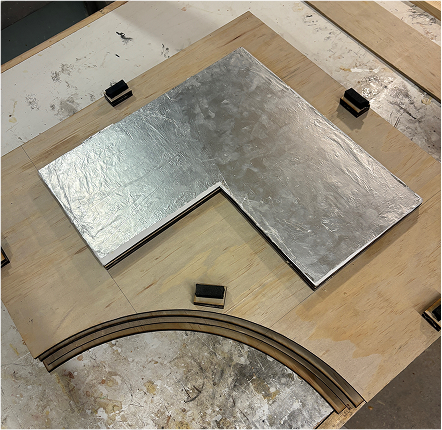
The unique requirements of our game required unique solutions. Creating custom wiring with tinfoil and a Teensy micro controller enabled full control over the capabilities of our controller. From cutting the tinfoil to the size and layout of foil, and even the type of tape used for adhering our wires, each step of the process needed to be adapted to our stomp pad and the needs of our project. This controller was made to take a literal stomping and maintain its consistency and accuracy.
Just as important as the accuracy of the controller is the feel of using it. We designed a multi-layer layout that would allow for seamless connection of our buttons on the top of the board while also aligning with guides on the frame underneath. Fine tuning the “squish” and rebound of the buttons required particular placement and depth of special rubber strips.
THE WIRE WHISPERER
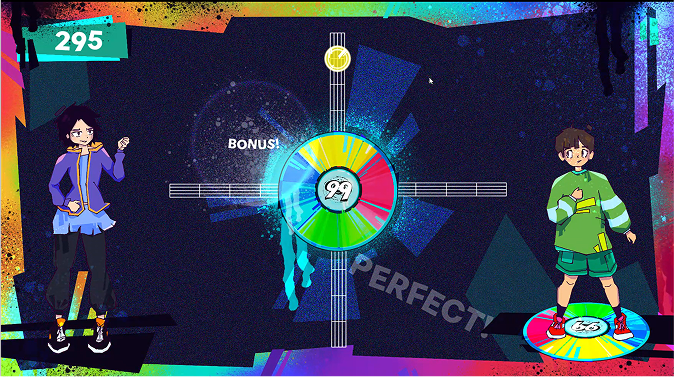
This is the final version of Rhythmscape 99. It features all of the art by Nefeli, our wonderful artist. This small process blog does not encompass even one percent of all of the hours spent this semester on Rhythmscape - frustrating, exhausting, wonderful hours. Game development and programming in general is like any other creative endeavor in that it is incredibly frustrating and incredibly rewarding at the same time. Nothing is worse than banging your head against a wall trying to fix the same bug for days, and nothing feels better than finally figuring it out. Working on Rhythmscape has taught me about honesty, about scope creep, about my own weaknesses, my own strengths, my interests, and even one or two things about game development.


With our art painted on the buttons, matching the in-game designs, we were ready to test out the board in its final state. To our delight, it is even more enjoyable than each version that came before it. The bright colors pop, the buttons squish and rebound in a satisfying manner, and the game pushes you to hop and stomp in engaging patterns. Our goal for this controller was to make you feel like you were playing from inside the game, and it hit all of our heuristics.
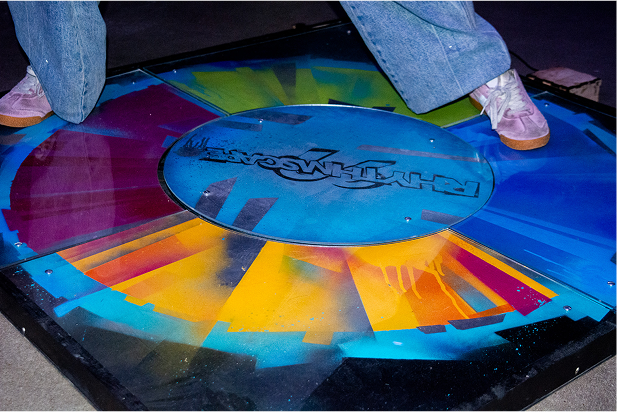
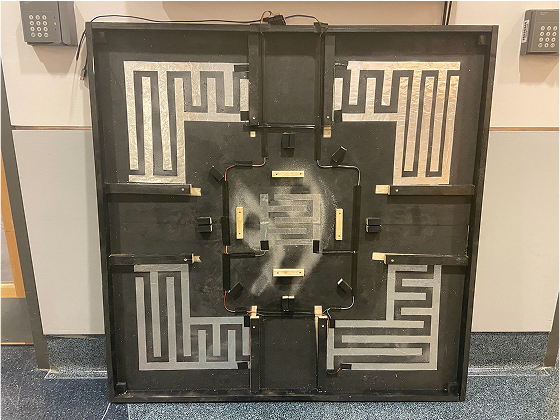
Making the controller at full scale delivered new rounds of challenges to overcome, like grounding sneaky static electricity that was building up beneath the buttons. A lot of work went into testing and refining the size of the board to feel large enough that it gets you moving, yet small enough to navigate easily. We also needed to build in squares for stability while integrating with our smooth curves of the buttons above.
THE WIRE WHISPERER

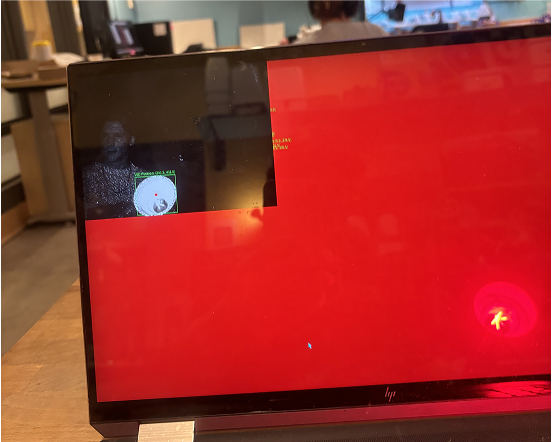
The first steps in creating our motion sensed guitar-staff controller was developing a simple tracking script. It turned out to be much more than simple. Over a month or so, and a few dozen different python scripts, we tried color detection, Kinect motion sensing, and then finally landed on infrared imaging which also gives the controller a sweet red glow coming from the top. Using infrared and a bright light source allows the game to be played in all kinds of different lighting conditions. It is consistent and clear in its implementation, letting the player discover the input and explore it throughout the gameplay.
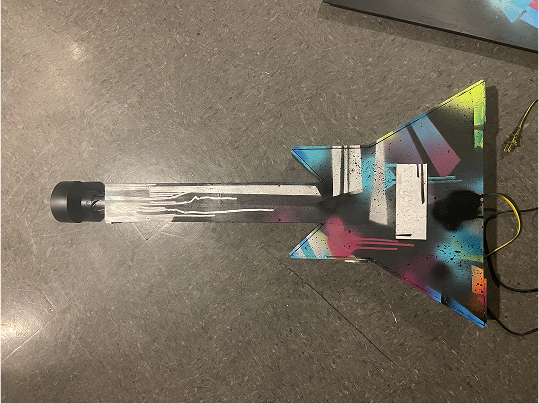
With our imaging script, we just needed a rocking guitar. An infrared build is more than enough to track the position of the tip of the guitar within space, which we can instantly convert to a screen position in game. With the controllers matching up with the in game models, it is fun and immersive just to pick up the guitar or hop up on the stomp pad. The game invites you to contort your body and get into your best rock star poses to maximize the points you can gain.
 1.png)


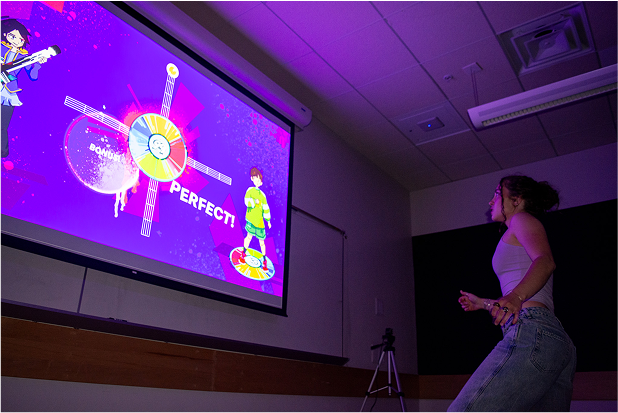
 1.png)
Quickly our game gained traction I developed a story as mentioned in the lore of Stephanie and Mike an older sister and younger brother. I developed sketches which I turned over to THE SCULPTOR. In the story we follow siblings Stephanie and Mike who accidentally unleash Tone Death. This shadowy villain seeks to erase music from history, leaving the world in silence. Our young heroes must travel across the Rhythmscape, freeing the musical genres of history from Tone Death’s grasp. With each victory, their Walkman gains new power, leading them to a final showdown in their hometown Chicago to save the world from eternal silence. It was important to me and the whole team that the aesthetic and story would be represented in the controllers.
In my role I had to put on a lot of different hats. I tried to lead our group best I could with a positive attitude to continue to press on. I came up with ideas when we hit roadblocks in game design and controllers. One of the most important roles I had was gathering information from play testing. I was fortunate enough to coach a boys basketball team with the exact age demographic we wanted for our game. I spent many hours coming up with fixes in game and out of the game from this feedback so that Rhythmscape 99 would be the game we know and love today.
The whole idea of Rhythmscape 99 had to start somewhere. I talked with the CODE DOCTOR initially to discuss the idea of making a collaborative game in which two players have separate controllers to play as one character within the game. This idea quickly snowballed into a rhythm game. As Game Director I gathered a group of people with expertise in all the necessary facets of our game. This includes the CODE DOCTOR, SCULPTOR, and WIRE WHISPERER an expert team for a masterful project.
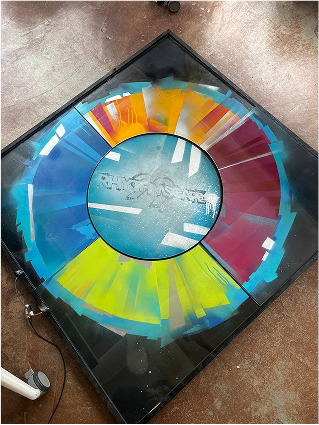
With the help of this amazing team we were able to create a very unique experience involving rhythm, collaboration, and most importantly fun! We were able to execute our vision that myself and the rest of the team are extremely proud of. We hit our milestones, continued to persevere, and our product shows the hard work of every team member.